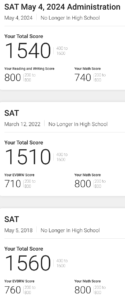It’s OK to be a little neurotic when taking your GMAT. I am not encouraging you to freak out or anything like that. What I am encouraging you to do is to write little notes to yourself. Use your dry-erase board to write little reminders to yourself. You may feel stupid or silly when you are doing it, but feeling silly while getting a problem correct is a way better feeling than not feeling silly while missing a problem you should have gotten right. What is perhaps the best example of a test taker overlooking a very important detail that should have been remembered? Any question involving complementary probabilities. On any such problem, I advise my students to always write themselves a little love note reading, “DO NOT FORGET TO SUBTRACT FROM 1!” I only hope they are following my advice. It’s so easy to forget this little detail, because computing the complementary probability in a problem is no easy task. After putting forth such effort, it is understandable that a test taker would let up his or her guard. The test taker then forgets to subtract this value from one. Sure enough, the complementary probability is one of the wrong answer choices begging the non-neurotic test-taker to choose it.
Another reminder or “love note” I encourage students to write on their dry-erase boards is “a b c d e” for every single data sufficiency problem. It’s complicated enough navigating the flow chart when deciding which answers to eliminate. Why try to keep track of eliminated answers in one’s head? Old test-takers like me had an actual paper test booklet where we could actually cross out answer choices. You won’t have that “luxury.” So, write down “a b c d e” on every data sufficiency question so you can keep track of which answers you eliminate.
One other note regarding “a b c d e.” I encourage students to write “a b c d e” on any question where they are being asked something like, “Which of the following does NOT appear in the passage?” or “which of the following is NOT a possible solution.” In questions like this, a test taker is being asked to find four values or four pieces of information that would be acceptable. They are then asked to eliminate those as correct answer choices. It is easier than you might believe to start out doing just that, and halfway through, finding an answer that would be acceptable and choosing that as your answer to the question that is asking you which answer would NOT be acceptable.
So, take the time to write yourself a reminder or two. You’ll remember me, and though you might feel stupid doing so, you’ll get the right answer!

